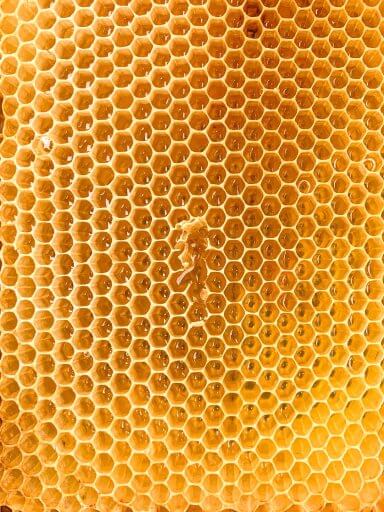Why are cross combs a problem?
Beekeepers prefer a comb constructed in parallel, neat layers because this design makes it easier to harvest honey at the end of the season and perform hive inspections.
Beginning beekeepers might be warned about the problem of cross combs, but it’s something they don’t usually think about until it happens. The first step for preventing cross combs is to get a solid starter kit for your bees.
When honey bees build their combs perpendicular to the favorable direction of the top bar or frame, it makes the beekeeper’s job difficult. Sometimes, bees even build their combs across multiple frames.
A cross comb becomes an issue when the beekeeper does their hive inspection and discovers a dangerous, messy situation. In this instance, the beekeeper might have to break the comb to lift the hive frame. This demolishes the brood and all the honey your bees have worked for.
How do beekeepers prevent cross combs?
The best way to prevent the sticky, messy clean-up that comes along with discovering cross combs is to stop the process before it happens. Keeping a clean, clear, stable structure makes your bees happy, so they won’t diverge from the norm.
Another way is to make sure your hive doesn’t lean. Since gravity influences how bees build their comb, even a small Tower of Pisa-type lean can influence the way they work.
A top-bar frame (like the ones we offer here) encourages your honey bees to build even, straight combs.
What should beekeepers do if they discover a cross comb?
If a cross comb develops, some small pieces will be unsalvageable; nothing can be done for these. Do everything you can to cut away the large pieces then reattach them using rubber bands or string to the top bar.
The process will take patience and your bees will probably get annoyed, but it’s necessary to save the hive. When the comb and the bars are reattached, return them to the hive. Place any leftover honey on the outer edge of the brood nest and keep the frames with the brood together.
If you discover a cross comb late in the season, however, it’s best to just let it be. There likely isn’t enough time for the bees to recover from the disturbance and secure the comb after destruction this late in the process. In such a case, it’s better to wait until the next spring when there will be less brood damage, fewer bees to deal with, and more time for the bees to repair the damage and clean up.
Contact Dadant & Sons to learn more about preventing and treating cross combs
Check out our comb honey production book to learn everything you need to know about producing honey.
Please reach out to Dadant & Sons with any other questions you might have regarding the care of your bees. We’re grateful to impart any wisdom we can, based on our decades of experience, to our customers and neighbors.


